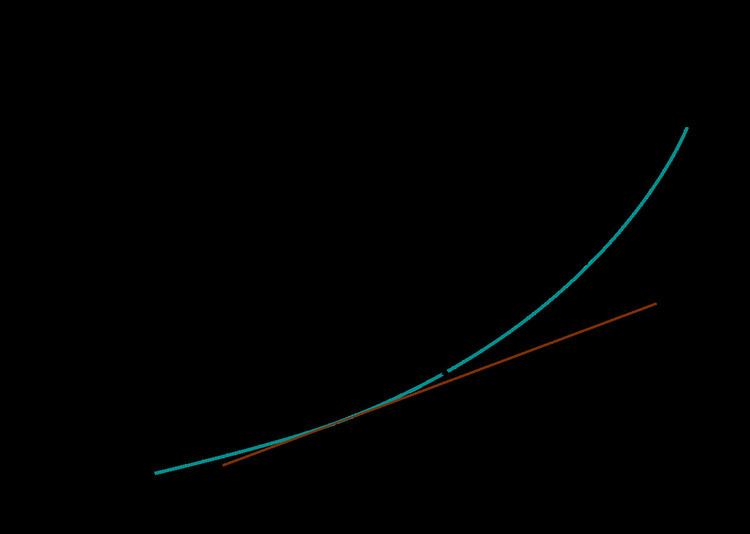 | ||
In mathematics linearization refers to finding the linear approximation to a function at a given point. In the study of dynamical systems, linearization is a method for assessing the local stability of an equilibrium point of a system of nonlinear differential equations or discrete dynamical systems. This method is used in fields such as engineering, physics, economics, and ecology.
Contents
Linearization of a function
Linearizations of a function are lines—usually lines that can be used for purposes of calculation. Linearization is an effective method for approximating the output of a function
For example,
For any given function
Using the point
While the concept of local linearity applies the most to points arbitrarily close to
Visually, the accompanying diagram shows the tangent line of
The final equation for the linearization of a function at
For
Example
To find
Linearization of a multivariable function
The equation for the linearization of a function
The general equation for the linearization of a multivariable function
where
Uses of linearization
Linearization makes it possible to use tools for studying linear systems to analyze the behavior of a nonlinear function near a given point. The linearization of a function is the first order term of its Taylor expansion around the point of interest. For a system defined by the equation
the linearized system can be written as
where
Stability analysis
In stability analysis of autonomous systems, one can use the eigenvalues of the Jacobian matrix evaluated at a hyperbolic equilibrium point to determine the nature of that equilibrium. This is the content of linearization theorem. For time-varying systems, the linearization requires additional justification.
Microeconomics
In microeconomics, decision rules may be approximated under the state-space approach to linearization. Under this approach, the Euler equations of the utility maximization problem are linearized around the stationary steady state. A unique solution to the resulting system of dynamic equations then is found.
Optimization
In Mathematical optimization, cost functions and non-linear components within can be linearized in order to apply a linear solving method such as the Simplex algorithm. The optimized result is reached much more efficiently and is deterministic as a global optimum.
